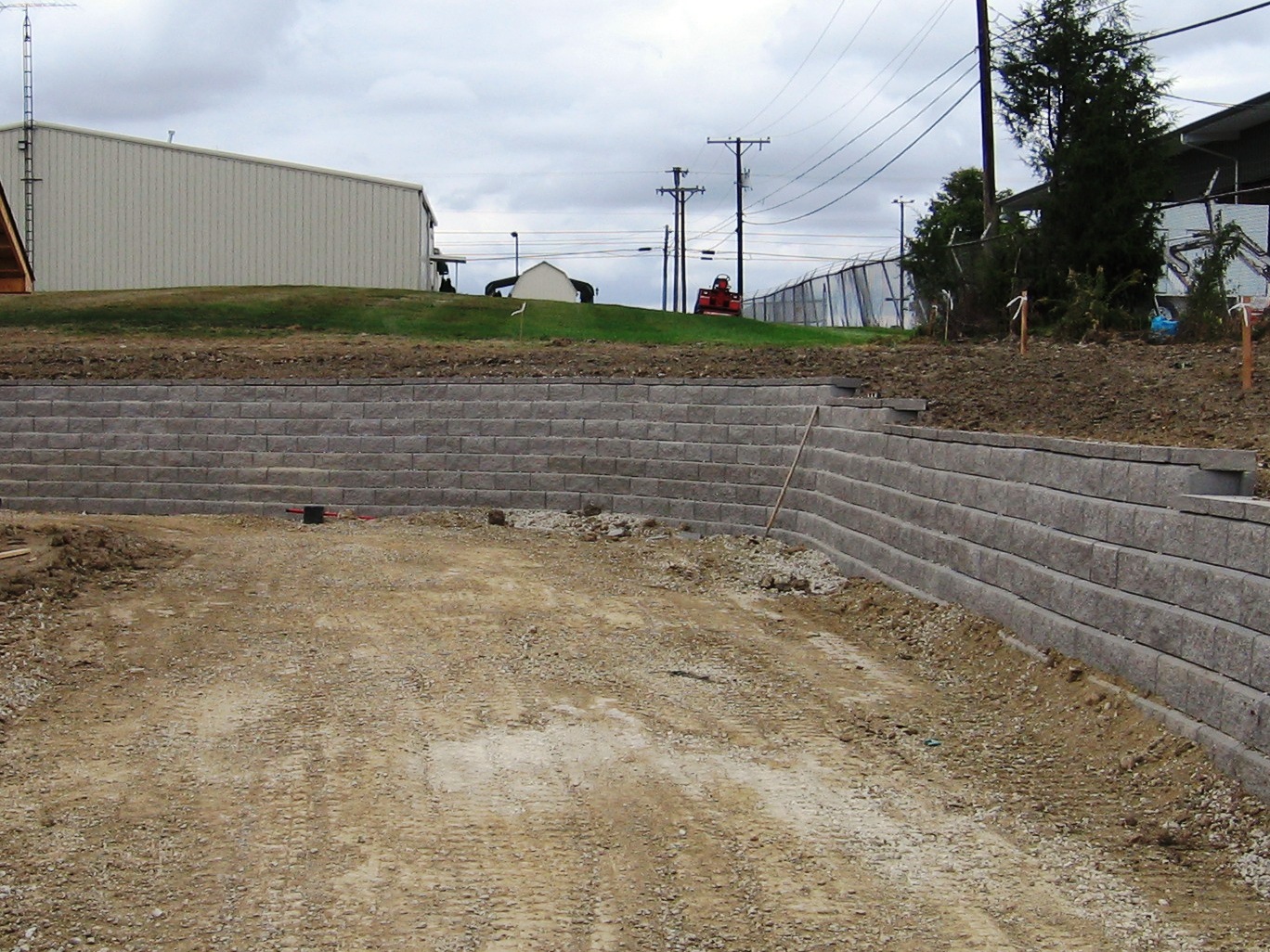Retaining Walls

Retaining walls contain soils and hold them in place behind the inside face of a vertical (wall) structure. Retaining walls are installed when a large shift in a site’s grade elevation is desired in a very short distance, in some cases for aesthetic reasons. Since the soils contained behind the wall are trapped at a nearly vertical angle, depending on the height of the wall and the soils there can be tremendous soil pressures present which must be carefully designed for. Additionally, any loads on top of the soils contained behind the wall (known as a surcharge), such as paving or other site improvements, will contribute to an even greater loading on a retaining wall structure. Moisture content and adequate drainage of the retained soils is also an important consideration.
Retaining walls can be constructed of many different types of materials, and several basic principles may be applied to resist the pressures developed behind the wall. A gravity retaining wall relies on the weight of the wall materials themselves to resist the pressures exerted by the contained soils and surcharge. Earth, rock, and gabions (rock ballast that is usually contained within wire cages) can be employed in a gravity-based retaining wall, on principles similar to those of a gravity dam.
A cantilever retaining wall is another type of retaining wall, and it appears similar to an inverted letter “T” in cross section. The cross section is designed to adequately contain the soil pressures and any surcharge through its two basic components: a base (horizontal portion) and stem (vertical portion). The outside tip of the base is referred to as the “toe” and the inside tip of the base is the “heel”. A cantilever retaining wall relies much less on material weight, but requires a careful analysis of the loads exerted on the wall components and the soil characteristics at the project site. Cantilever retaining walls are most often made of reinforced concrete or combinations of other materials such as steel and wood. Semi-gravity retaining walls would be a combination of both applications. Cantilever retaining wall design must address many complex forces interacting concurrently. These include the soil pressure acting on the inside wall stem, any surcharge, soil weights on the wall base, the soil characteristics beneath the base to resist sliding and settling, and the moments created by all these forces acting at the heel and toe. Additionally, the connection between the base and stem is a critical structural detail in cantilever retaining wall design.

Buildipedia Staff
The Buildipedia research and writing staff consists of dozens of experienced professionals from many sectors of the industry, including architects, designers, contractors, and engineers.
Website: buildipedia.com/